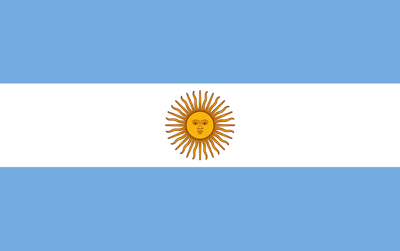Pakistan Local Cotton Market:
(The local cotton market is struggling with low trading volumes and high prices due to ongoing rains and reduced crop yields. Pakistan’s textile industry is increasingly turning to U.S. cotton imports to meet demand, with a significant gap between consumption and local production. Despite potential price increases, the cotton market remains challenging, driven largely by supply issues rather than demand)
1- Business activity in the local cotton market has slowed down, with the ongoing rains in the cotton belt driving up cotton prices while keeping trading volumes low. The persistent rains have caused significant damage to the cotton crop, leading textile spinners to increasingly rely on imported cotton.
2- Pakistan’s textile industry is currently facing a severe crisis, impacted by unfavorable weather conditions, reduced cotton cultivation, and declining demand in both local and international markets.
3- The Crop Reporting Service of Punjab’s Agriculture Department has released data on cotton production in Punjab up to August 16, which shows a 19.4% decrease in cotton production compared to the yield of last year.
4- Stagnant demand for textile products is likely to keep cotton consumption low, causing buyers to delay decisions until the market stabilizes.
5- In fact, due to quality issues with local cotton and higher prices compared to international cotton, major textile mill groups are showing greater interest in importing cotton & Pakistan is in number one in importing of cotton form USA.
6- Due to crop issues, Pakistan is expected to be a major buyer of U.S. cotton throughout the year, as it supplies yarn to key markets like China, Vietnam, and Southeast Asia.
7- The annual consumption of spinning mills is expected to be around 12.5 million bales, while the registered and unregistered cotton production in the country is expected to be around 8.5 million bales this year. Therefore, around thirty-five lac bales of cotton will be imported to meet the cotton needs of local mills.
8- USA Cotton prices have finally closed above 70 cents, though a temporary dip below this level is still possible. Price momentum is driven by crop production issues, with demand playing a minimal role. There’s potential for prices to rise to 78-80 cents, but the path will be slow and challenging. The cotton industry’s outdated demand strategies mean higher prices will rely solely on supply factors.
9- Last week, cotton prices in Punjab and Sindh showed firm trend from Rs 17,800 to Rs 18,700 per maund.(USC 0.77~0.83 lbs). In Sindh, cotton rate was Rs 17,600 to Rs 18,000 per maund, while in Punjab it ranged from Rs 17,900 to Rs 18,700 per maund. KCA was Up Rs 300 to at the level of Rs.17,800 Rs per maund, while PSF reduced Rs. 3 to at Rs. 362 PKR/kg.
Local Yarn Market:
(The local yarn market remains stagnant, with yarn prices under pressure due to less demand and import competition. Suppliers face challenges maintaining inventory levels while navigating a challenging economic landscape)
1- The domestic yarn market faces headwinds, characterized by sluggish business activity and stable yarn prices. Fine and coarse count yarns are under pressure, competing with imported yarns, particularly
Siro yarn.
2- Suppliers navigate a challenging landscape, balancing low inventory levels against the backdrop of escalating energy and production costs.
3- PSF prices have experienced a steady decline, with a drop of Rs.3/kg on August 19, 2024, and Rs.2/kg on August 22, 2024. Further price reductions of Rs 3-5/kg are anticipated next week.
4- Faisalabad’s market continued slow activity, especially in viscose and fine-count yarn sectors. Cash flow constraints persisted, hindering business operations.
| Count | Price in Pak Rupees / 10 LBS | Price US$/Bale |
| 16/1 Carded Weaving | 3250 – 3350 | 470 – 485 |
| 20/1 Carded Weaving | 3400 – 3500 | 490 – 505 |
| 30/1 Carded Weaving | 3800 – 3900 | 550 – 565 |
| 20/1 Combed Weaving | 3850 – 4000 | 555 – 580 |
| 30/1 PC Carded Weaving 52:48 | 3200 – 3500 | 465 – 505 |
| 40/1 Combed Compact Weaving | 4425 – 4550 | 640 – 660 |
| 60/1 Combed Compact Weaving | 6000 – 6200 | 870 – 900 |
| 80/1 Combed Compact Weaving | 8000 – 8200 | 1160 – 1185 |
| 40/1 CVC Carded Weaving 60:40 | 4000 – 4150 | 580 – 600 |
Export Yarn Market:
(The export yarn market improved with active price checks from Chinese customers, although confirmed deals were limited. Strong domestic market activity and stable cotton prices helped prevent panic selling, while new cotton arrivals increased. European market activity was minimal due to holidays, but several deals were successfully closed with Chinese buyers)
1- The export yarn market saw improved activity this week, with Chinese customers actively checking prices, though business confirmations were limited.
2- Suppliers remained firm on their pricing but were keen to finalize deals with confirmed bids.
3- Domestic market activity was strong, which helped prevent suppliers from panic selling in the export sector.
4- New cotton arrivals are increasing, with suppliers purchasing to meet their needs, while cotton prices remained stable due to robust buying by spinners and expectations of a short crop.
5- Chinese customers continued to inquire about prices, resulting in several deals being finalized with selected brands.
6- European customers were mostly unavailable due to holidays, leading to minimal business activity during the week.
| Export Yarn Prices | ||||||||||||||||
|
Local Fabric Market:
(Slow momentum in local fabric market was witnessed. Looking ahead, we anticipate that slow market sentiments will persist in the absence of bulk inquiries. Consequently, price trends are expected to remain stable)
1- The local fabric market continues to experience slow momentum for both narrow and wider-width fabrics.
2- Brands are actively inquiring and placing orders, albeit after tough negotiations. However, local finishing mills are struggling to secure bulk inquiries, resulting in limited trading activity for both narrow and wider-width fabrics.
3- Weavers have extended their bookings, with narrow-width looms now covered until the end of September and wider-width looms until the end of October or early November. They are currently offering deliveries beyond these dates.
Export Fabric Market:
(Average business activity was seen in the export fabric market due to slow demand from Far Eastern customers. European and USA buyers partially resumed their offices, but no buying was witnessed. Suppliers are expecting a good flow of orders from mid-September onward)
1- The export market remained depressed due to slow demand around the globe.
2- Limited number of inquiries were received from Far eastern customer with lower targets about 5~6% than the offered prices.
3- Asking prices were stable and suppliers were resistant to lower their prices due to high production cost and stable exchange rate.
4- Currently good suppliers are booked till end of Sep and offering early Oct onward deliveries.
5- European and USA buyers partially resumed their offices after summer holidays however no considerable business activity was seen.
6- Prices for wider width were stable due to stable prices in domestic market as well as import based yarn counts mainly from 60 & high counts.
7- The shipping lines are once again trying to increase ocean freights which is adding another price challenge for the suppliers.
8- Suppliers for wider width are booked till end of Oct and offering Nov deliveries
| Local and Export Fabric Prices
| ||||||||||||
|
Bed Linen and Towel:
(The Home Textiles production lines are operating at near-full capacity, driven by competitive orders. However, industry challenges such as sharp pricing, high overheads, and inflation continue to strain profitability. Although the current inquiry flow has slowed due to the European holiday season, we expect order confirmations and new bookings to resume by the second week of September)
1- This week has been a continuation of last week’s trends regarding production lines. Currently, the capacities of vertically integrated units are approximately 80% utilized in processing, with a similar trend observed in the stitching units.
2- These production activities are primarily driven by booked orders, which were notably competitive in terms of price points and margins. However, many of these production houses reported losses when comparing pre- and post-order analysis.
3- The flow of inquiries has slowed down, likely due to the holiday season in Europe. Despite this, the strong flow of inquiries last month and subsequent submissions have resulted in a significant queue of orders awaiting confirmations.
Garments:
(Overall garment factories are operating on sixty to seventy percent of their production capacities and striving to grab more orders to fulfill their empty space. For that, factories are also ready to squeeze their margins to clinch the orders. Some brands are also working on FW25 developments which show a healthy sign for future orders)
1- Pakistan’s apparel industry has encountered several difficulties. Recently, Bangladesh, Vietnam, and Cambodia have become more competitive nations for low-cost apparel manufacturing, which has made it difficult for Pakistan to hold onto its market share.
2- On the other hand, dyeing units had a shortage in the mid of 2024, but, as time goes on, things are improving as a glimmer of optimism appears as brands and retailers begin to place developments for SS25/FW25 that reflect optimistic attitudes. In the end, that will generate demand in the apparel business and result in orders in the 2024 3rd quarter. However, factories are offering Mid Nov 24 onward deliveries.
3- As far as denim in concern, the global market is still fighting inflation and trying to revive yet the manufacturers are hopeful for the upcoming seasons as consumer still has a good amount of demand for a sustainable product and is willing to pay for an environmentally friendly product.
Crude Oil:
1- Crude Oil prices opened at USD 74.37 with lower level as compared to last week closing figures. in this week, crude oil prices showed mix trend and closed on slightly higher side by the end of week.
2- In last day of the week, Crude Oil price closed at USD 74.83 with increase of 0.46 USD cents as of opening figure of week.
| Opening of Week | Closing Of Week | Change | |
| Price | 74.37 | 74.83 | 0.46 |
Exchange Rate:
1- In last week values of Pak rupee appreciated against US Dollar’s, other major currencies showed mix trend in both interbank and open markets.
2- At the end of week, Euro closed on a positive note with figure of 1.12 and British Pound also closed on positive note with figure 1.32 against USD.
| Selling | Buying | |
| LC Sight | 276.25 | 276.20 |
| LC 120 Days | 262.15 | 262.10 |
| Open Market | 281.74 | 275.67 |
New York Cotton Future:
The New York Cotton futures started the week higher than the previous week’s closing figures. However, NYCF showed an upward trend in this week and closed on higher side by the end of week.
1- October 2024 closed at 71.29, experiencing a increase of 331points from the previous week.
2- December 2024 closed at 70.91 showing a higher trend of 223 points from the previous week.
3- March 2025 closed at 72.28, increase by 222 points from the previous week.
4- May 2025 closed at 73.38, rose of 217 points from the previous week.
Liver Pool Indices:
Liverpool Index A was opened at 78.60 on higher levels from the previous week of closing figure.
In this week Index “A” showed higher trend and closed on upper side by the end of week.
At last day of the week, LPI “A” closed at 81.65 with an increase of 305 points.
| Opening of the Week | Closing of the Week | Change | |
| Index A | 78.60 | 81.65 | 3.05 |







